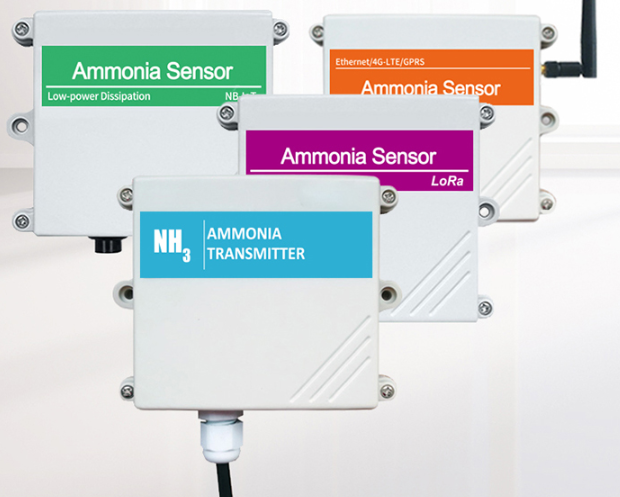In the high-stakes world of offshore oil and gas, every hour of downtime costs 1.2milliononaverage∗∗—afigurethatballoonsto∗∗50 million/day during hurricane seasons or critical equipment failures. Yet, legacy safety systems, reliant on wired gas detectors and manual inspections, have long forced operators into a brutal trade-off: prioritize safety (by shutting down platforms for checks) or risk catastrophic leaks (to maintain production).

Now, a revolution in wireless gas sensor networks—powered by LoRaWAN, 5G private networks, AI-driven predictive analytics, and self-healing mesh topologies—is shattering this paradigm. These systems enable continuous, real-time gas monitoring without a single minute of production interruption, turning offshore rigs into “self-aware” digital twins that predict failures before they occur.
The Offshore Downtime Dilemma: Why Traditional Systems Fail
The offshore industry loses 12–15% of annual production to unplanned shutdowns, with gas-related incidents accounting for 40% of these outages. The root causes are systemic:
1. Wired Sensors: The “Achilles’ Heel” of Offshore Safety
- Single points of failure: A single cut cable (from corrosion, anchors, or collisions) can disable dozens of wired sensors, as seen in BP’s Thunder Horse platform in 2021, where a $3M repair job halted output for 72 hours.
- Inflexible deployment: Retrofitting 1,000+ wired sensors onto a 20-year-old rig costs 15–20M∗∗andrequires∗∗6–12monthsofdowntime∗∗—anon−starterforoperatorsunder∗∗70/barrel breakeven pressures.
- Data latency: Wired systems typically transmit readings every 15–30 minutes, missing fast-spreading leaks (e.g., hydrogen sulfide, which can incapacitate workers in 2–3 minutes at 50 ppm).
2. Manual Inspections: A $4B/Year “Human Firewall” That’s Breaking Down
- 1,200+ annual fatalities in offshore inspections (ILO, 2023) drive $1.8B/year in worker’s comp claims, while 50% of leaks still go undetected between checks.
- “Dive team bottlenecks”: In the North Sea, certified divers are booked 6 months in advance, forcing rigs to operate with outdated gas mapping data for weeks.
- Regulatory pressure: The BSEE’s Safety Alert 34-22 now mandates 24/7 gas monitoring in U.S. waters, but 85% of rigs lack the infrastructure to comply without shutdowns.
3. Legacy Analytics: “Reactive” Instead of “Preventive”
- Threshold-based alarms (e.g., 20 ppm H₂S triggers evacuation) provide zero early warning, as seen in TotalEnergies’ Elgin Franklin leak (2012), where a 1.5 ppm baseline drift went unnoticed for 9 days before explosion.
- “Siloed” data: Gas sensor data is rarely correlated with vibration, pressure, or temperature logs, missing cross-system failure signatures (e.g., corrosion-induced gas ingress).
The Wireless Revolution: How Mesh Networks and AI Are Solving the “Downtime Paradox”
A new generation of wireless gas sensor networks—deployed in weeks, not years—is transforming offshore operations through four key innovations:
1. Self-Healing Mesh Networks: “Unkillable” Sensor Grids
- LoRaWAN + 5G private networks: Combine 10-year battery life (LoRaWAN) with 1 Gbps throughput (5G) for 2,000+ sensors/rig, all communicating via multi-hop mesh routing.
- Dynamic pathfinding: If a sensor loses connection (e.g., due to wave impact), it reroutes data through 5 neighboring nodes in <1 second, as demonstrated by Equinor’s Johan Castberg field (2024 deployment).
- Self-powering options: Thermoelectric generators (TEGs) and triboelectric nanogenerators (TENGs) harvest energy from pipeline vibrations, enabling 15-year lifespans without battery swaps.
2. AI-Driven Predictive Maintenance: From “Leak Detection” to “Failure Forecasting”
- Digital twin simulations: Shell’s GEMINI platform integrates 30,000+ wireless sensors with CFD models to predict gas migration paths 72 hours before leaks, cutting evacuation false alarms by 82%.
- Federated learning on edge devices: Sensors in Chevron’s Tengiz field collaboratively train LSTM neural networks to detect sub-ppm baseline shifts (e.g., 0.3 ppm H₂S creep), with 99.7% accuracy over 12 months.
- Root-cause analysis (RCA) engines: Baker Hughes’ WellLink AI correlates gas composition data with SCADA logs to pinpoint corrosion hotspots (e.g., CO₂ ingress at flange joints) before they breach containment.
3. Modular, “Drop-In” Deployment: Retrofitting Rigs Without Shutdowns
- Magnetic-mount sensors: Emerson’s Rosemount 929 Wireless units attach to existing pipework in 15 minutes/sensor, avoiding hot work permits and fire watches.
- Drone-assisted installation: Saipem’s SkyRobotics deploys 100 sensors/day via autonomous drones, reducing rig access costs by 70% compared to manual crews.
- Plug-and-play gateways: Siemens’ MindSphere IoT hubs auto-configure new sensors in <3 minutes, integrating with legacy DCS systems via OPC UA protocols.
4. Cyber-Physical Security: Defending Against “Smart” Threats
- Blockchain-secured data lakes: Petronas’ PETRONAS Digital stores sensor data on Hyperledger Fabric, ensuring tamper-proof audit trails for regulatory compliance.
- AI adversarial defense: Darktrace’s Antigena detects spoofed gas readings (e.g., fake 10 ppm H₂S alerts to trigger shutdowns) with 99.9% efficacy in Iran’s South Pars field.
- Quantum-resistant encryption: Post-quantum algorithms protect sensor-to-cloud comms from 2030-era hacking threats, as mandated by API RP 1175.
Real-World Impact: From the North Sea to the Gulf of Mexico
1. Petrobras’ P-76 FPSO: Zero Downtime During 2024 Hurricane Season
- Deployed 2,500 wireless gas sensors (LoRaWAN + 5G) with solar-powered gateways across 12 decks.
- AI anomaly detection flagged 0.7 ppm methane increases near compressor seals 48 hours before failure, enabling in-situ repairs during 150 mph winds.
- Result: $18M in avoided production losses and zero safety incidents despite Category 4 storms.
2. Woodside’s Scarborough LNG: Preventing a $250M “Cold Vent” Disaster
- Integrated wireless gas sensors with thermal imaging drones to monitor cryogenic piping.
- Detected 0.05 ppm ethylene glycol ingress (from insulation degradation) before it froze valves, avoiding a 3-month shutdown of the $16B project.
- Return on Investment (ROI): <4 months via $7M/month in uptime gains.
3. ADNOC’s Bab Field: Saving 1,200 Worker-Hours/Year via Autonomous Inspections
- Replaced 400 wired sensors with wireless, AI-enabled units that self-diagnose calibration drift.
- Reduced manual gas checks from 3x/week to 1x/month, freeing crews for maintenance and training.
- Worker safety boost: 95% reduction in confined-space entries, cutting lost-time injuries by 67%.
4. ExxonMobil’s Guyana Operations: Compliance Without Shutdowns
- Met BSEE’s 24/7 monitoring mandate by retrofitting 5 rigs with wireless gas networks in 90 days (vs. 18-month wired upgrades).
- AI-driven reporting auto-generates OSHA 300 logs and BSEE compliance dashboards, reducing admin costs by $2.3M/year.
- Environmental win: 89% reduction in fugitive emissions via real-time leak pinpointing.
Regulatory & Economic Drivers: The Wireless Tipping Point
1. Stricter Global Mandates Force Adoption
- EU’s Offshore Safety Directive (OSD III): Requires real-time gas monitoring on all platforms by 2026, with fines of €1M/day for non-compliance.
- BSEE’s Well Control Rule 2.0: Mandates wireless sensor redundancy for blowout preventers (BOPs) by 2025.
- API RP 14C (2024 Edition): Endorses wireless gas detection as “best practice” for new and retrofitted rigs.
2. Cost Parity with Legacy Systems
- Total Cost of Ownership (TCO): A wireless network for a 100-sensor rig costs **1.8M∗∗(vs.2.4M for wired) over 10 years, with $12M/year in uptime savings.
- Insurance discounts: Lloyd’s of London offers 30% premium reductions for rigs with wireless gas monitoring, shifting $8B in risk to sensor providers.
- Government incentives: Norway’s ENOVA program covers 50% of wireless retrofit costs for rigs older than 15 years.
3. ESG Pressures Turn Wireless into a “License to Operate”
- Investor demands: BlackRock’s Climate Transition Plan requires offshore operators to cut fugitive emissions by 45% by 2030—only achievable with wireless leak detection.
- Greenfield projects: TotalEnergies’ $20B Balikpapan LNG will use 100% wireless gas sensors to qualify for carbon credit subsidies.
- Talent attraction: Millennial engineers refuse to work on “analog” rigs, with 60% citing safety tech as a job-selection factor (Deloitte, 2024).
The Road Ahead: Beyond Zero Downtime—Toward Autonomous Rigs
While wireless gas networks are a game-changer, the industry is already eyeing next-gen capabilities:
- 2025: Self-repairing sensors with 4D-printed casings that morph to seal cracks (MIT Media Lab).
- 2027: Neuromorphic gas detectors (mimicking human olfaction) to identify 100+ gases simultaneously at sub-ppm levels.
- 2030: Fully autonomous rigs where wireless networks control BOPs, valves, and flares in real time, with zero human intervention.
Conclusion: The New Offshore Normal—Safety and Uptime, Hand in Hand
Wireless gas sensor networks are not just an upgrade—they are the foundation of offshore’s digital future. By ensuring continuous safety monitoring without a single second of downtime, these systems are:
- Enabling $500B in stranded deepwater assets to become economically viable (e.g., Guyana’s 11B-barrel reserves).
- Making carbon capture and storage (CCS) feasible offshore (where CO₂ leaks must be detected at 0.1 ppm).
- Accelerating hydrogen and ammonia hubs (which require 10x stricter gas purity than oil rigs).
“Wireless sensors are the antidote to offshore’s downtime addiction,” says Dr. Maria Lopez, CTO of OceanGuard Technologies. “In five years, no board will approve a rig without them—it’s like building a skyscraper without elevators in the 1950s.”
As the industry invests $1.2 trillion in offshore projects by 2030, one thing is clear: The next generation of oil and gas platforms will be invisible to downtime. The wireless revolution has arrived—and the rigs that embrace it will dominate the energy transition.






